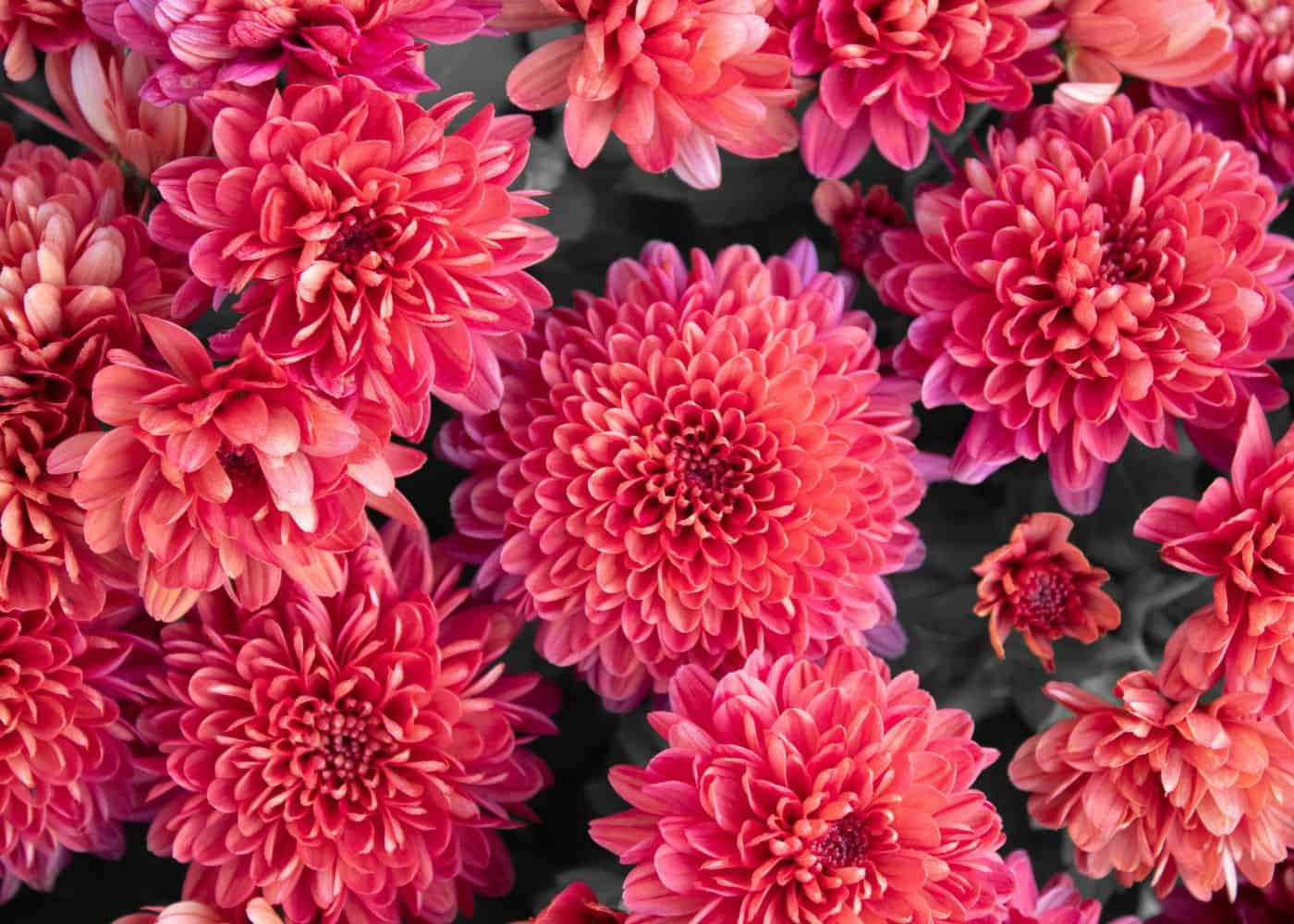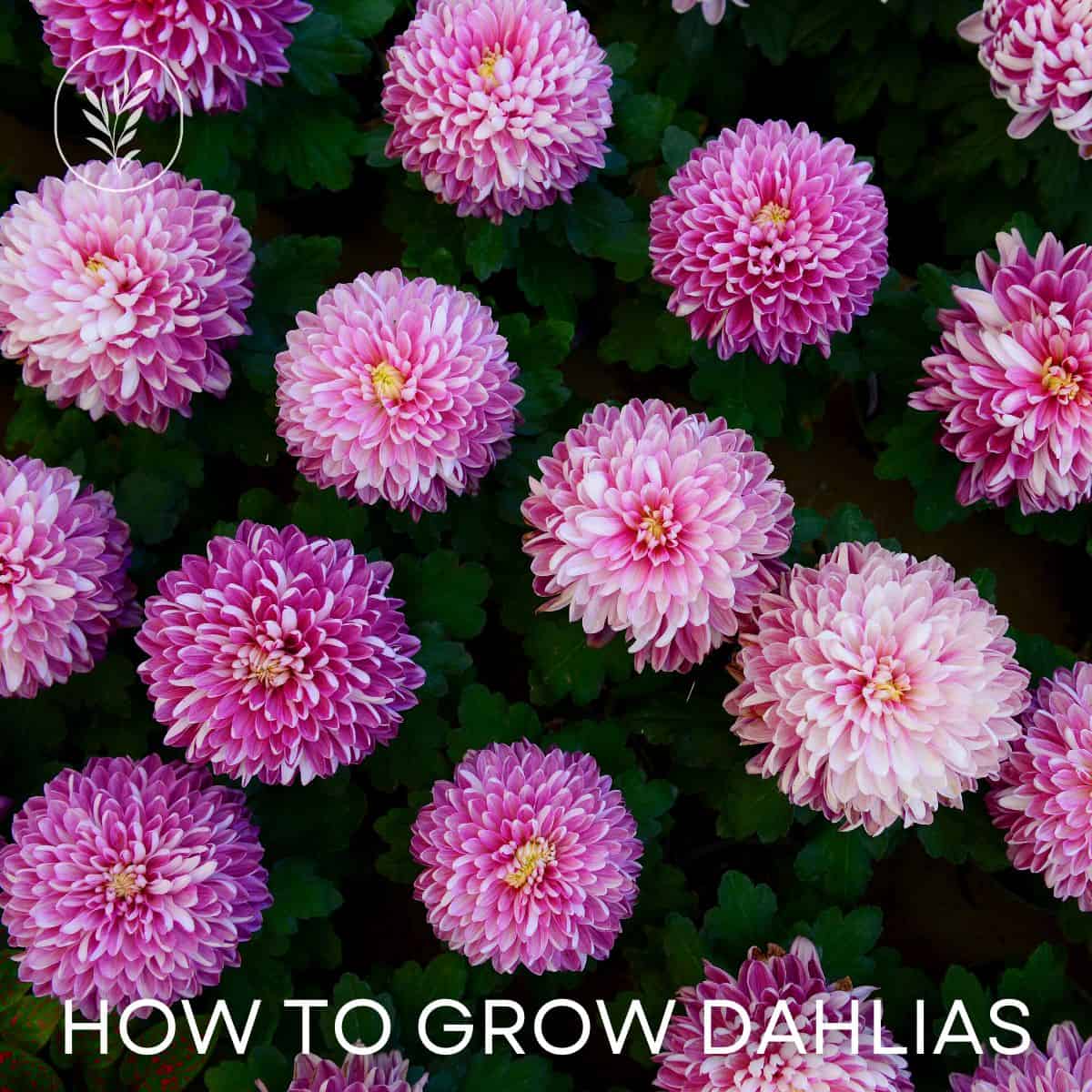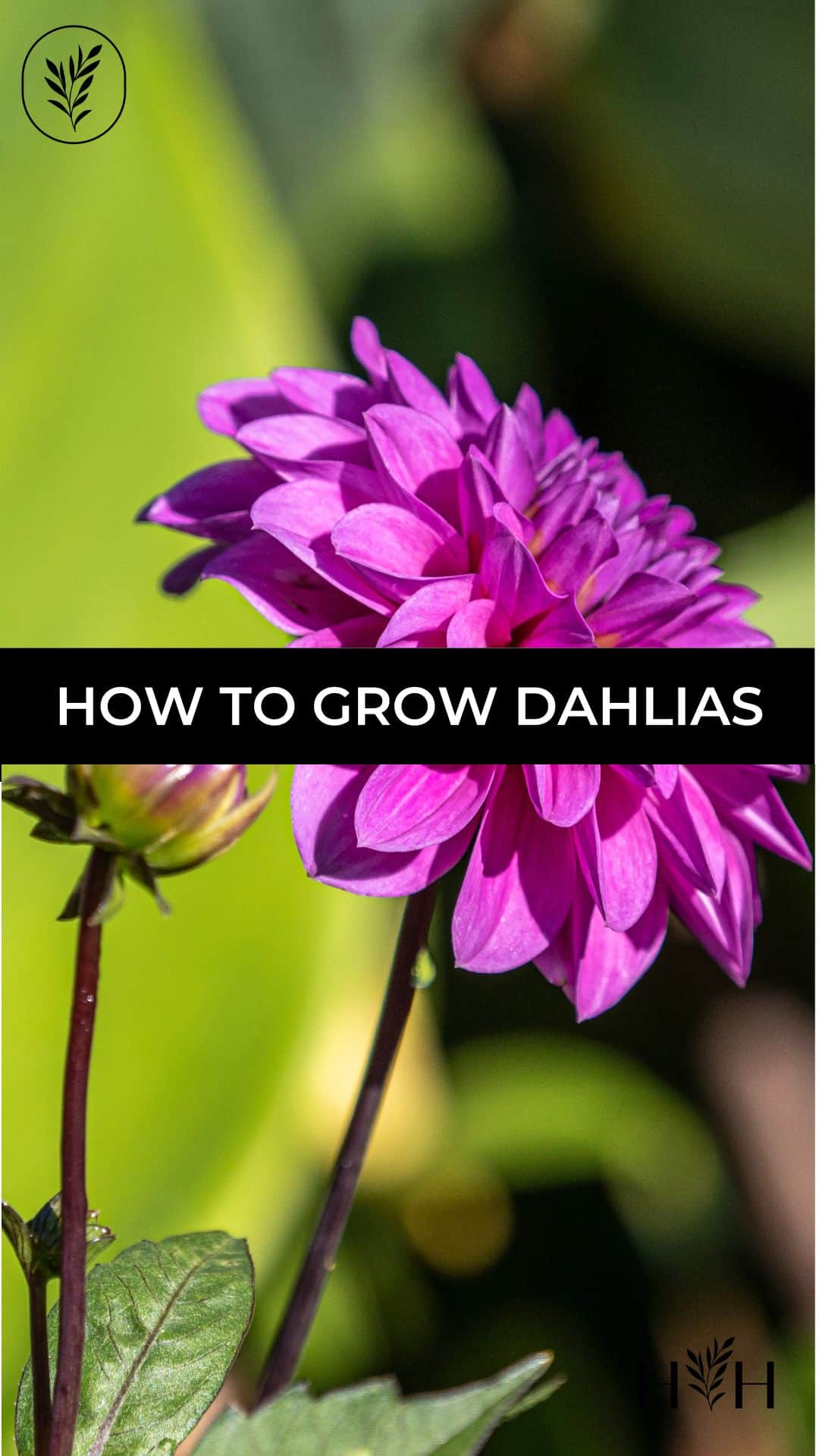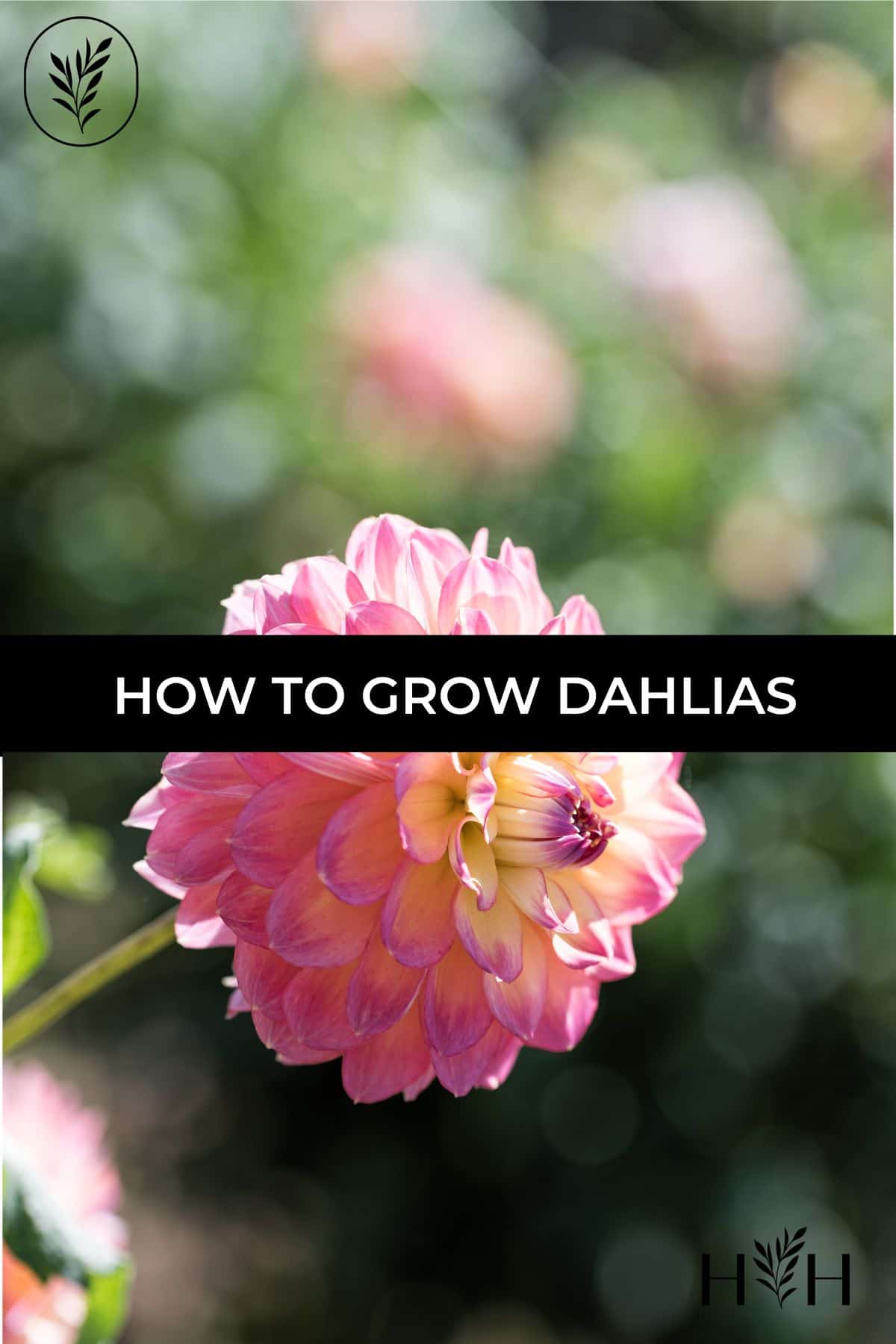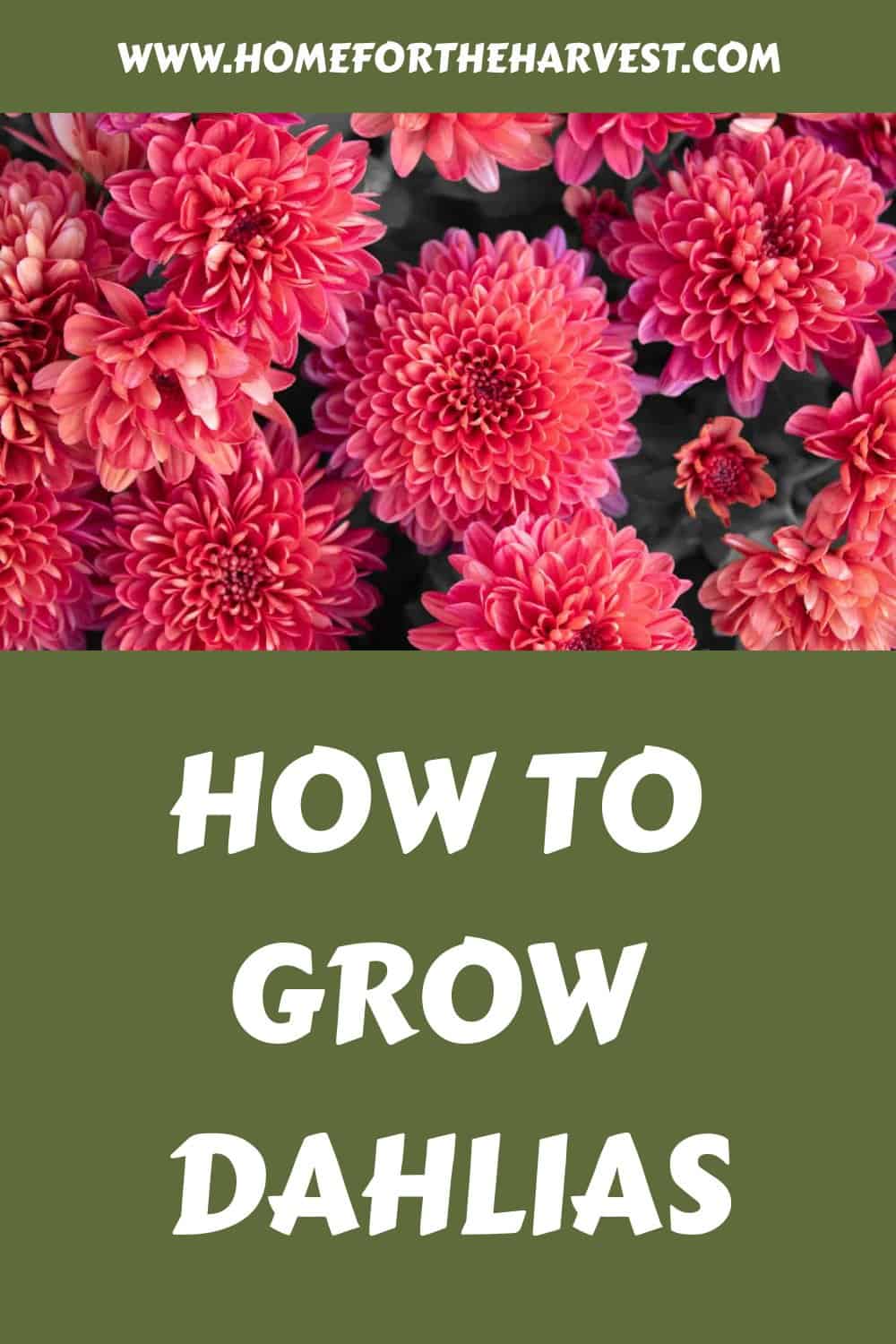Dahlias are the darlings of the cut flower world, with unique flowers that draw attention and look stunning in a vase. You may think this complex look makes them difficult to grow, but you would thankfully be wrong. If you’re wondering how to grow dahlias, you’ll be pleasantly surprised at how easy it is!
There are plenty of dahlia varieties to choose from, featuring different flower shapes and colors. The tubers should be planted in full sun in rich, well-draining soil and staked to protect the tall stalks from damage. Tubers are planted in spring, with the first flowers popping up in around two months. Pinching and deadheading can improve flowering and the overall look of the plant.
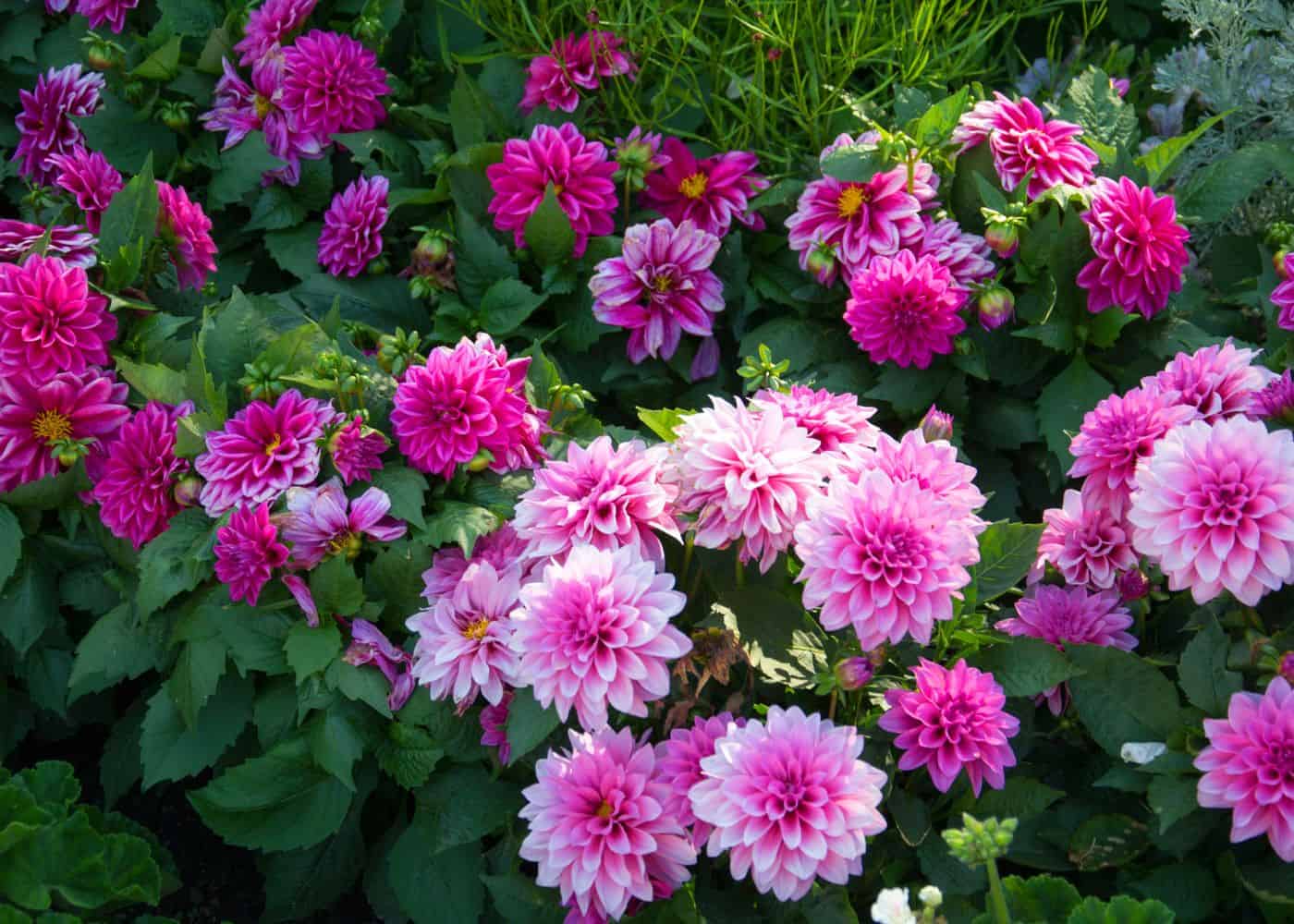
About dahlias
Dahlias are trending flowering plants that have captured the hearts of gardeners and flower enthusiasts around the world. This genus of perennials is grown from tubers and includes 42 species, with many more hybrid cultivars on the market.
Named after Swedish botanist Anders Dahl by Antonio José Cavanilles, the Director of the Royal Gardens of Madrid, the Dahlia genus was introduced to Europe in the late 18th century and quickly became one of the most popular cut flowers in the world.
Dahlia varieties
Dahlias are usually divided into different groups by flower type. The America Dahlia Society lists 20 of these types of dahlias, including:
- Pompon
- Collarette
- Laciniated
- Anemone
- Orchid
- Waterlily
- Informal Decorative
- Formal Decorative
Along with unique forms, there are plenty of different colors to choose from, with new varieties constantly being produced. Here are some lists of different colored varieties, including red dahlias, pink dahlias, purple dahlias, white dahlias, yellow dahlias, and orange dahlias.
Many prefer the larger types (Café au Lait is an example of a crowd favorite), but the compact forms of smaller types like Pompons are also visually stunning in the garden.
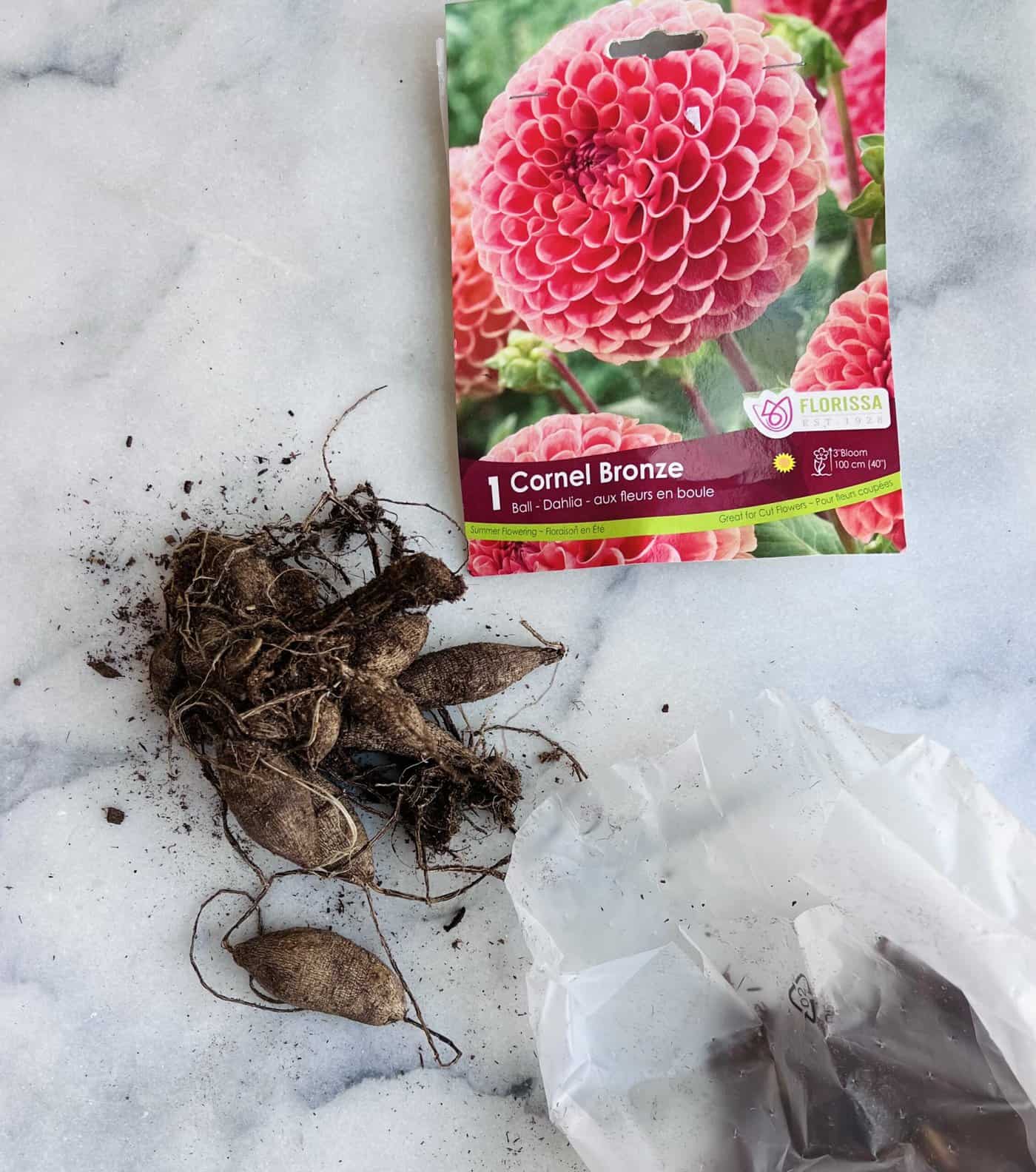
Planting dahlias
Native to Central America, dahlias prefer warmer temperatures, growing best in USDA Zones 8 and above. Some types can handle the cold better than others, so make sure you do some research on your chosen variety before planting.
If you live in a cooler region, you can also lift the tubers when temperatures drop, then store them for the winter, and plant them again the following spring.
Planting location preferences
To get the most flowers possible from your dahlia plant, full sun positions are best. Aim for a minimum of six hours of direct sun, preferably more if you live in a cooler region with less intense sunlight. Before planting, consider the movement of the sun around your garden to make sure nearby structures or other plants won’t shade the plants.
These plants don’t handle extreme weather well and should be sheltered from wind. Even if you are staking taller types, they will still face stress in extreme winds. They can easily be knocked over, damaging the stems and limiting the number of blooms you’ll get from one plant. Keep them protected by a wall, fence or other plants that don’t shade them throughout the day.
When selecting a planting area, be aware that the tubers of Dahlias are prone to rotting. The soil should be well draining to stop any water from collecting around the tuber. Amend dense soils with additional drainage materials before planting to avoid any problems later on. Take it from me – I lost half of my dahlia tubers to one bout of heavy rain last year because I didn’t resolve soil issues before planting.
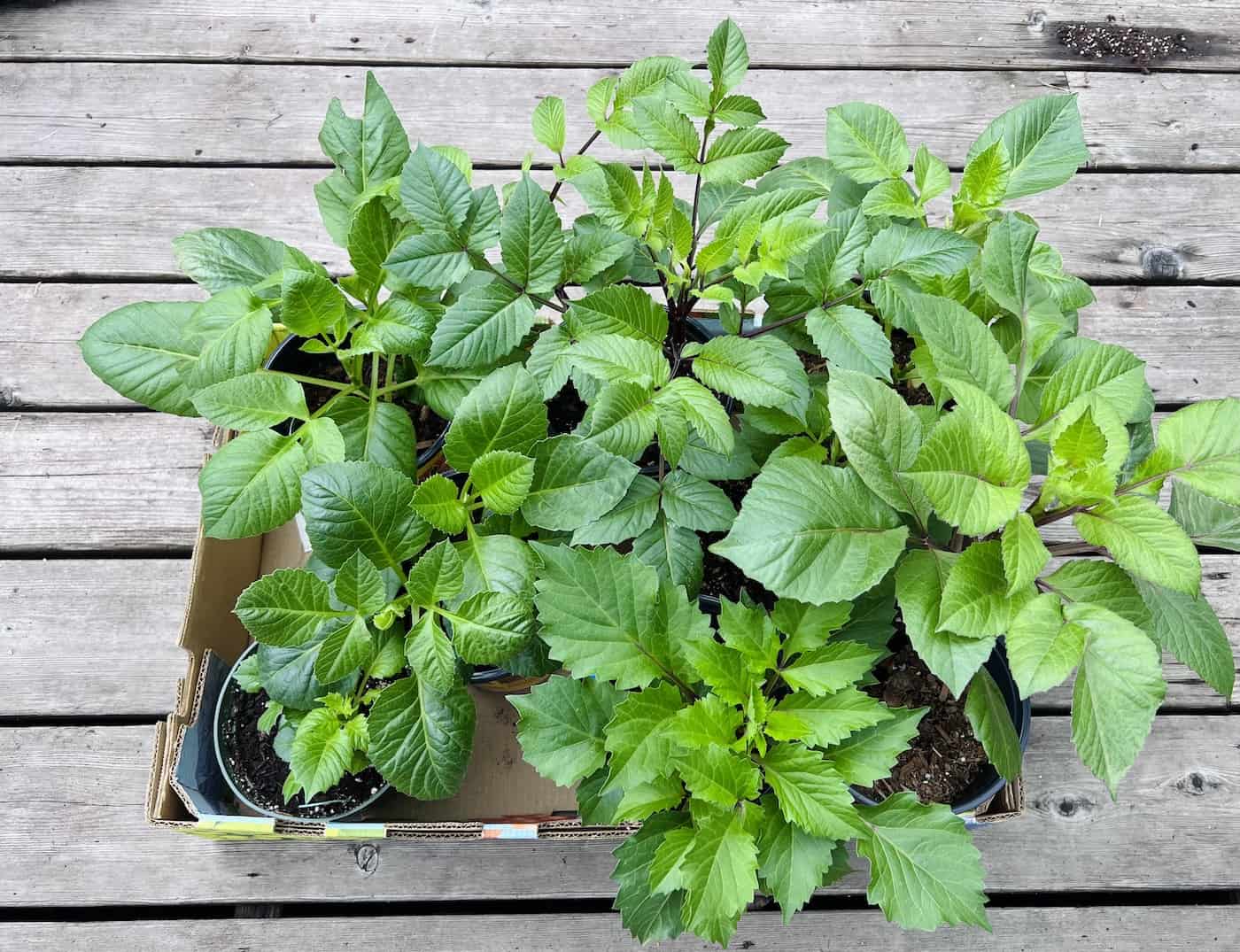
When to plant dahlias
These summer-blooming plants are best planted in spring once temperatures have increased and frost has dissipated. Check the last frost date for your region before planning the perfect planting time.
If you live in a cool region with icy spring weather, you can beat the season by planting in containers and transplanting once the soil has warmed, although this can impact growth and flowering due to root disturbance. Keep the pots protected from the cold by keeping them in a greenhouse or indoors when temperatures drop.
How to plant dahlias
Plant spacing will depend on the variety you are growing. Around 10 inches apart is the recommended spacing for most types, but make sure you check the instructions on the packaging for your specific type before planting.
Plant the tuber horizontally with the eye facing upwards. This is the point where the stalk will grow, so it’s important to get this step right. Pack soil around the base as the plant grows to strengthen the root system and provide some stability.
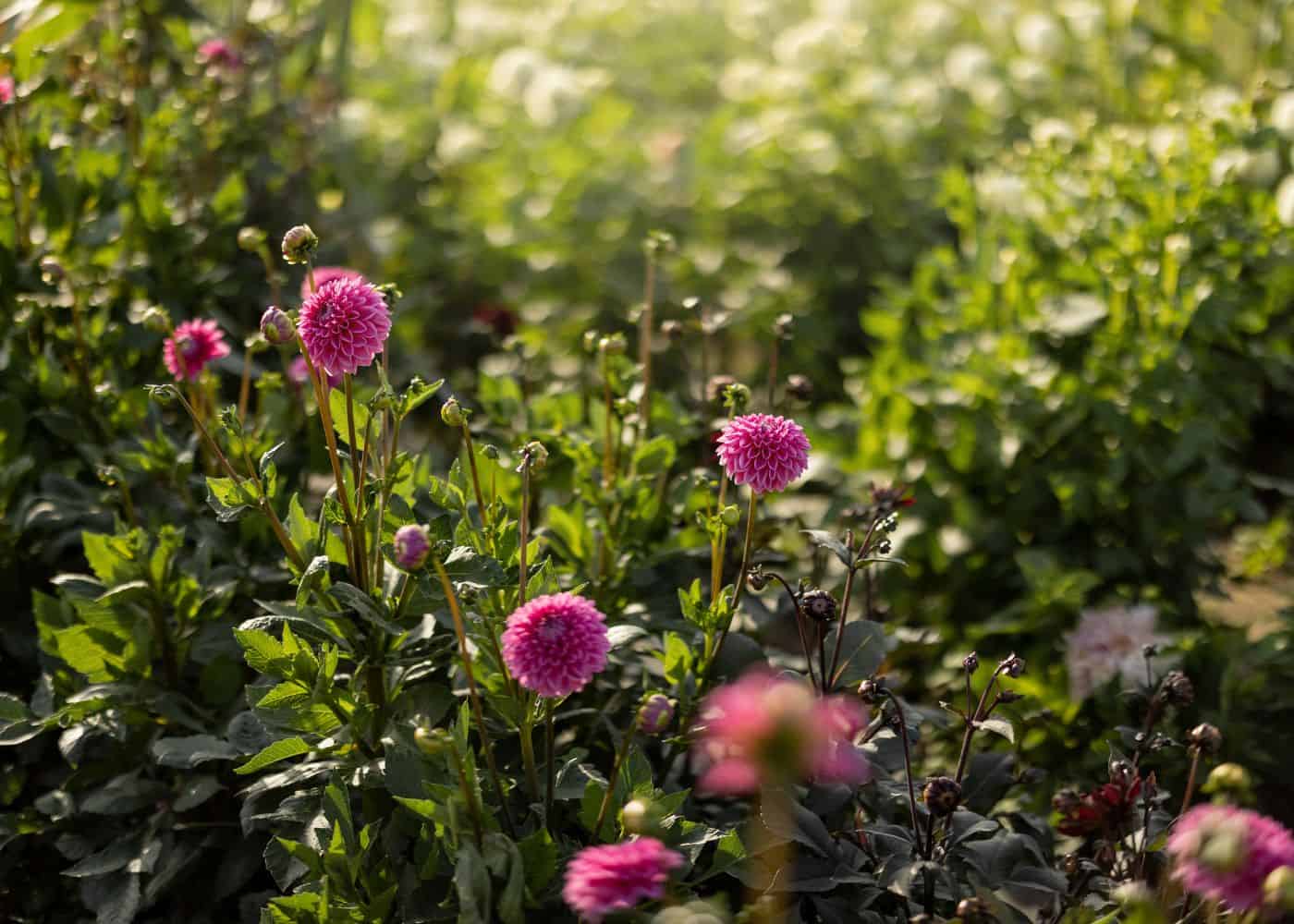
Dahlia care
Here are the basics of dahlia plant care.
Light
Dahlias require full sun positions for optimal growth, but some can tolerate partial shade if sunlight is very intense. Deep shade should be completely avoided as it will stunt growth and prevent flowering. Choose varieties that are more tolerant of partial shade if you want to get the most blooms from your plant in a less-than-optimal spot.
Soil
To grow Dahlias successfully, it’s best to plant them in fertile and well-draining soil with a slightly acidic to neutral pH between 6.2 and 7. Avoid heavy clay soils completely to prevent rotting, or amend them with compost and sand before planting to improve conditions.
Watering
Dahlias need to be watered immediately after planting and require consistent watering every couple of days while they are establishing strong root systems. Once the stalk has emerged, increase watering to once or twice per week, depending on the environmental conditions. After this early stage, assess moisture levels in the soil and rain in your region to decide the best time to water.
Adding mulch can help retain moisture and reduce evaporation – especially helpful if you’re looking to save water. Mulching is even more important in summer, where lack of moisture can lead to heat stress and limited flowering.
As with most perennials, overhead watering should be avoided to prevent disease. Water slowly and deeply, allowing the moisture to reach all parts of the soil evenly for the strongest possible root system.
Fertilizing
Dahlias don’t require fertilizer at planting time if your soil is high-quality. But to get the most blooms possible from your plant, fertilize about a month after planting and potentially again during flowering to give the plant a boost.
Use a balanced natural fertilizer sprinkled around the soil. Overfertilization can cause yellowing leaves and wilting – important signs to look out for soon after fertilizing.
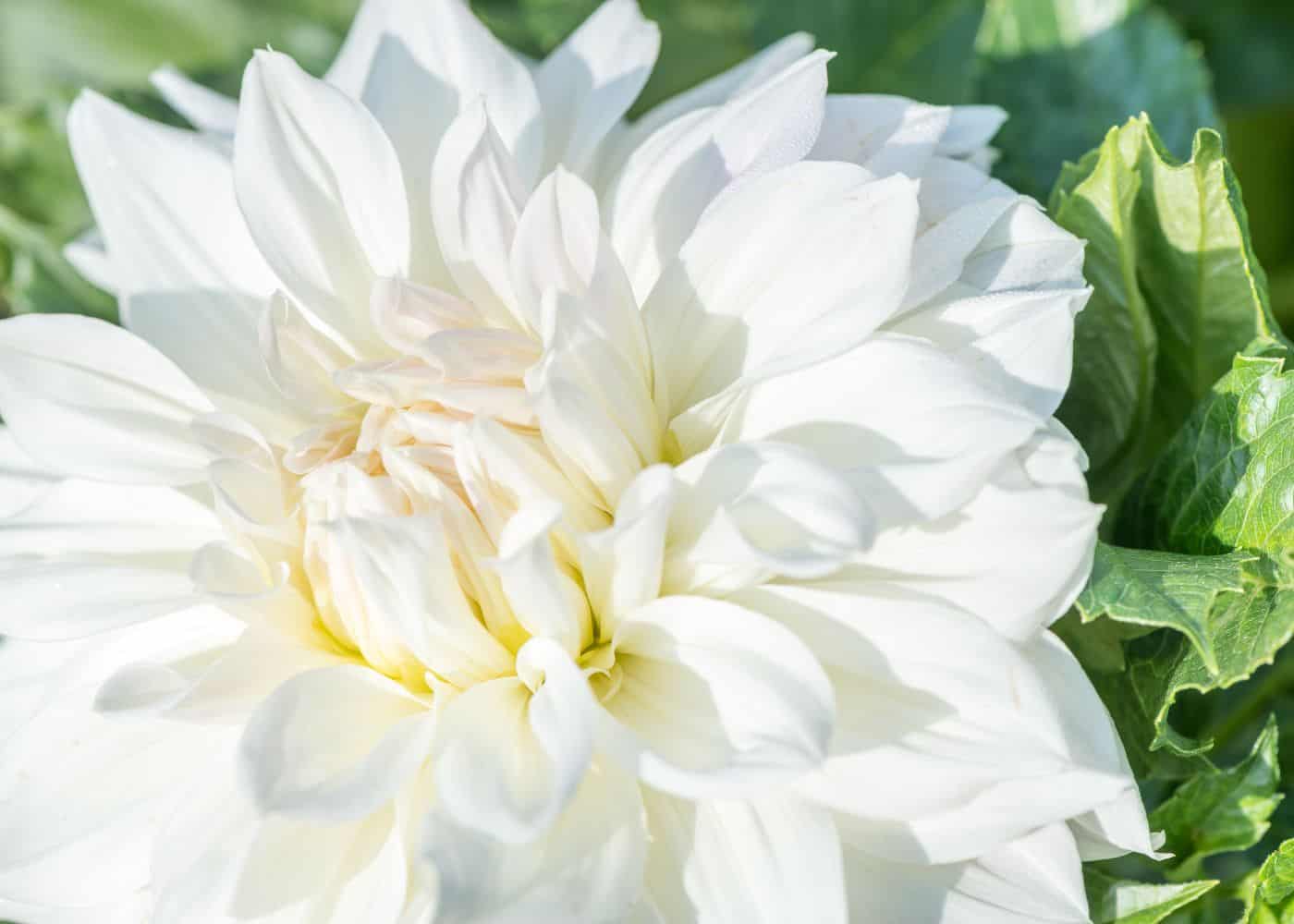
Maintenance
Dahlias are a little more high maintenance than some other flowers in the garden.
Staking
To provide support for taller Dahlias, stakes are recommended. Bamboo poles are popular options, but metal stakes come with the benefit of being reusable if you plan to keep your Dahlia patch going long-term.
At planting time, install one stake close to the eye to avoid damage to the tuber. If you plant later on, the chances of negatively impacting the newly developed roots are much higher. For multiple Dahlias, connect stakes with twine to create two or three rows and guide stalks through the twine as they grow. Tie the stalks to the stake using a stretchy material to avoid cutting into the stem and tying too tightly.
Pests and diseases
Dahlias can be damaged by various pests and diseases that are important to look out for. These problems have the potential to spread to the other plants in your garden, too, so prevention and quick eradication can save not only your dahlias but the rest of your plants too.
Diseases such as powdery mildew, stem rot, Botrytis blight, Verticillium wilt, mosaic virus, and necrotic spot virus should be closely monitored. Prune any concerning growth as soon as possible to prevent further spread.
Pests such as aphids, spider mites, thrips, caterpillars, slugs, snails, and leafhoppers can damage the leaves and stems of dahlias. To control pests, pick larger bugs off the plant and put them in soapy water. Use insecticidal soap or neem oil to remove smaller insects until the problem is gone.
Pinching
Pinching early on in the season stimulates new growth and branching, creating more stalks to produce even more flowers from one plant. Pinch when your plants are 8-12 inches tall with several sets of leaves to provide a strong base. Identify the central sprout on the main stem and cleanly pinch it off with your fingers or shears to trigger new growth.
Deadheading
Deadheading is a common practice in ornamental gardens to improve growth and encourage new flowers. By removing spent flowers (that take away from the overall appearance of the plant anyway), the plant’s energy can be redirected toward producing new flowers.
To deadhead dahlias, trim the flowers above the last set of leaves. You can also keep a few flowers on the plant towards the end of the season if you plan on collecting seeds.
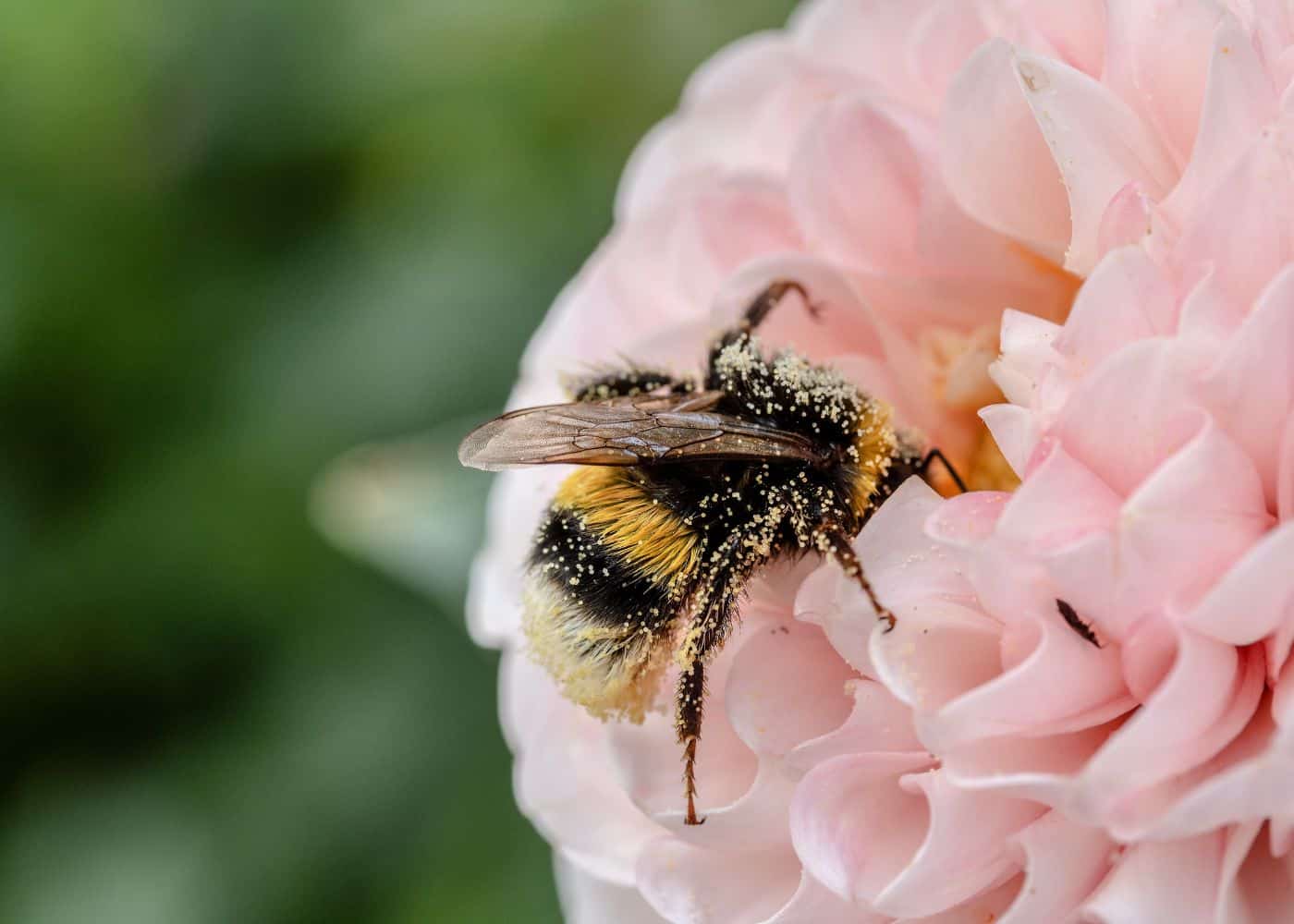
Dahlia blooming season
Dahlias usually bloom within about eight weeks, depending on conditions and variety. Planting time also has an impact on flowering. Check the specifics of your chosen cultivar for details on how long they will bloom – every type is different.
Dahlias can bloom for up to four months until fall, when cold weather causes them to die back. Plant a variety of cultivars with different blooming periods to enjoy these ornamental garden favorites for as long as possible.
Dahlias make wonderful, long-lasting cut flowers, which is one of the reasons why they are so popular. When cutting, choose flowers that have just begun to open, trimming early in the morning before the heat of the day sets in.
To make the flowers last longer, cut the stems at an angle and trim the bottom every few days to refresh the stem. Change the water when it gets cloudy, and clean out the container. Keep the vase in a cool area away from direct sunlight to prevent wilting and preserve the flower color.


